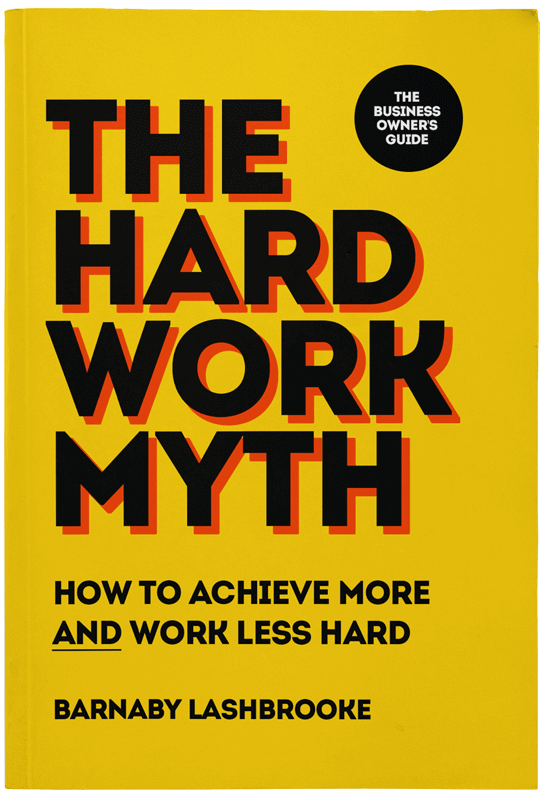Each day, small business owners lose an average of 96 minutes of productivity. That's over three weeks of lost time every year, but most have no idea it’s even happening. They’re busy nonstop, stretched thin, always “on,” yet somehow the progress never seems to match the amount of effort they’re pouring in.
But here's what the world's best business owners and top CEOs understand: you can't fix what you can't see. Most founders have never actually looked at how they spend their time. Not really. They work hard, but they rarely review how they work. They don't zoom out to study their time like data, to spot the patterns between effort and impact.
That's where a weekly time audit changes everything.
This simple, repeatable practice reveals exactly where your time leaks, which distractions quietly expand to fill hours, and which opportunities surface when you focus on the right things.
So, grab your calendar, your task list, and a few minutes of space. In this guide, you’ll learn how to audit your week the same way high-performing leaders do, so each week ends with clarity, meaningful progress, and a strategy you can confidently build on.

Why most business owners have no idea where their time goes
Most founders don't intentionally waste time. They simply lose track of it.
Let's break down the most common reasons why your time disappears.
Overcommitting (and underestimating)
We all think we can fit more into a day than we actually can, and business owners are especially guilty of this!
We assume tasks will take less time than they do. We underestimate the hidden layers, the follow-ups, the context switching, the setup, and the reset time. Something that seems like a simple 20-minute job can easily expand into an hour… and then the ripple effect throws off everything after it.
That’s why 84% of micro-business owners work more than 40 hours a week, yet still finish many Fridays with a sense of unfinished business. Not because they didn’t work hard. Not because they lacked discipline. But because the math was impossible from the start.
No real structure
A recent productivity survey found that 82% of people don't use any structured system to manage their time. Most rely on memory, instinct, and improvisation to get through the day.
This approach may feel flexible and adaptable, but cognitively, it’s expensive.
Decision by decision, interruption by interruption, your brain gets weighed down by micro-choices:
What should I do next? Should I answer this now? Can this wait? Did I forget something? What’s the most important thing here? The mental fatigue builds quietly until you’re operating on half-power by mid-afternoon.
Unclear priorities
If you don’t begin the day with absolute clarity on what matters most, the day will happily assign priorities for you. And it rarely chooses well.
Asana’s 2023 Anatomy of Work report revealed that 62% of the workday gets eaten up by “work about work.” In other words, communicating about work, searching for information and files, switching between different apps and tools, unnecessary meetings, and repetitive, mundane tasks.
You feel productive because you're always doing something, but there's never much to show for it at the end of the day. Meanwhile, your most meaningful work waits quietly for its turn.
'Productive procrastination'
Not all procrastination looks like scrolling through your phone or chatting with co-workers. Sometimes it disguises itself as work, and that’s what makes founders especially vulnerable.
This kind of procrastination is subtle. It doesn’t raise red flags. No one calls you out for “working too hard,” or “not hard enough.” The danger here isn’t that you’re doing nothing. It’s that you’re doing almost the right thing, but not quite.
It’s the reordering, rewriting, and color-coding of your to-do list.
It's the playing around with document fonts, margins, and headers, even though it was all fine the first time.
It’s the hours spent researching an idea you’ve already got plenty of data for.
It’s the tweaking, adjusting, “just refining,” long after you should have moved on.
If you're part of the 76% of entrepreneurs who lose 1-4 hours each day to procrastination, that’s not a small leak. That’s up to half a workday slipping through your fingers.
Lack of rest and recovery
Approximately half of all CEOs report getting less than six hours of sleep per night.
This is why founders often feel like they’re working twice as hard for half the output—it's because they probably are!
Sleep is your brain’s overnight janitorial crew. When you clock out, your glymphatic system clocks in—clearing out the waste that piles up during the day and restocking essentials like glucose, amino acids, and neurotransmitters.
But this clean-up only happens when you’re asleep. Skimp on rest, and your brain becomes a cluttered mess of toxic proteins. This cerebral 'junk' is what slows your thinking, weakens your problem-solving skills, and dulls your creativity, making even simple tasks take longer than they should.

The business owner's weekly 4-step framework
Here's the practical system to audit your time, uncover growth opportunities, and plan your next week with intention.
No fancy apps required. No need to overhaul your entire life. Just four simple steps that give you clarity on what's actually happening, and what to do about it.
Step 1: The reality check
Before you can improve how you spend your time, you need an honest understanding of how you’re currently spending it. Not the polished version you intended, and not the version you wish were true, but the real one.
Start by opening your calendar, planner, or any time-tracking record you use. Look at the past seven days with fresh eyes, as if you were reviewing someone else’s schedule. Every hour tells a story: where you showed up, where you got distracted, where you made progress, and where your time just vanished.
To make this concrete, categorize how you spent your time. Try using labels like:
- Client work
- Admin
- Marketing
- Sales
- Product or service development
- Meetings
- Emails and communication
- Strategic planning
- Learning and development
When you group your week this way, you may notice how uneven the distribution actually is.
Action points:
- Review your calendar (digital or paper) and mark each slot with one of the categories above.
- At the end of the week, note the time spent in each category.
- Compare what you intended to do versus what actually happened.
- Circle the areas that surprised you. Those are your biggest clues.
Step 2: The opportunity audit
Now that you see where your time went, it's time to dig into what that actually means.
This is where patterns, habits, and hidden inefficiencies reveal themselves.
Go through your notes from Step 1. Review any missed meetings, dropped priorities, or stalled projects. Don't treat them as failures—they're simply data points. Every unfinished task reveals something about your workflow, your focus, or your boundaries.
As you analyze your week, ask yourself:
- When did deep, focused work actually happen?
- When did interruptions spike?
- Which tasks expanded and consumed more time than expected?
- Which low-value, repetitive activities kept recurring?
As you answer these questions, you’ll start noticing themes. Maybe your mornings disappear into email before you even get to real work. Maybe “quick calls” reliably expand into 45-minute detours. Maybe you keep saying yes to tasks that push your priorities into the margins.
These patterns highlight your biggest opportunities to improve. Remember, you're not trying to create the perfect schedule. You're trying to identify where you can win back a few hours of clarity each week.
Action points:
- Write down the top three patterns or insights from your reality check.
- Examples: "I spent eight hours in meetings but only two in strategic planning," or "I checked email for an hour every morning and lost focus for the rest of the day."

Step 3: The strategic sort
Once you know how your time has been spent, the next move is to separate what actually matters from what just fills your day.
Think of this step as spring-cleaning your calendar.
Sort your task list or weekly overview into four buckets:
1. Strategic growth
These are activities that move your business forward: developing new products, building partnerships, refining your offer, high-value client conversations. If it creates momentum or revenue in the long run, it belongs here.
2. Critical operations
These are the must-dos that keep your business running smoothly: paying bills, handling customer support, managing payroll, staying compliant. They may not be exciting, but they're essential.
3. Delegate or Automate
These tasks are important, but they don't need you. Bookkeeping. Repetitive admin. Social media scheduling. Routine client emails. These are prime candidates for outsourcing or automation tools—especially if your goal is to reclaim focus for higher-impact work.
4. Should stop
The final section is for time leaks: constant context-switching, checking email every ten minutes, over-researching, attending meetings that add little value. If it doesn't serve growth or stability, cut it.
This exercise gives you a strategic lens to view your workload. And here's the thing: a small shift can create huge leverage. Every hour reclaimed from admin or low-value work is an hour reinvested in growth.
Action points:
- List your weekly tasks and sort them into the four buckets above.
- Highlight the tasks in "Delegate/Automate" or "Stop." Those are your quick wins for freeing up time.
- Identify and prioritize your Strategic Growth tasks for next week.
Step 4: The forward design
The final step is to turn all your insights into a game plan for the week ahead.
Start by blocking time for tasks from your 'Strategic growth' bucket before anything else fills your schedule. This makes sure that the work that matters most receives your best attention rather than whatever happens to be loudest that day. Think of this as giving yourself protected “CEO time.”
Then, choose three non-negotiable priorities that you are committed to finishing this week. These are outcomes that move your business forward in a meaningful way. It might be sending a proposal, preparing a launch, or completing a key hire. Treat these priorities as appointments you respect in the same way you would respect a meeting with a client.
It's also important to leave small pockets of time between tasks. These breaks give you room to recover from interruptions and shift gears without feeling rushed. A schedule that is full from morning to evening can look impressive, but it usually creates pressure rather than meaningful productivity.
From there, set a few clear improvement goals based on what you discovered. Perhaps you want to cut your email time, hand off an admin task, or dedicate an afternoon to strategic thinking. Small adjustments lead to noticeable progress when you repeat them week after week.
If you spotted tasks that drain your focus or pull you into repetitive work, this is a good time to explore outsourcing or automation. A service like Time etc can take on admin, scheduling, research, and more, so you can stay focused on the work that supports long-term growth.
Action points:
- Pick your three non-negotiable priorities and block them on your calendar.
- Add buffer zones (30 to 60 minutes daily with no official tasks) to protect your focus.
- Choose one task to delegate or automate this week.
- Set a recurring reminder for your next weekly audit. Consistency turns this from a one-off experiment into a long-term productivity system.

How to make it stick
In all honesty, you probably won’t feel a big difference after just one weekly audit. But after four? Eight? Twelve? You’ll look back and see a completely different level of clarity, control, and momentum.
The key is to turn the audit into a ritual: something predictable, anchored, and easy to maintain.
Choose a consistent time
Whether it's Friday afternoon when the week is still fresh in your mind, or Sunday evening when you can think clearly about the one ahead, pick a regular time that fits your routine. It doesn’t matter when you do it; what matters is that it happens at the same time every week. You may also find that doing it in the same place each week will help turn the habit into muscle memory.
Set aside just 20–30 minutes
You don’t need to carve out hours, just a focused window where you can zoom out, evaluate, and adjust.
Use tools you’ll actually stick with
A beautifully designed productivity app won’t help if you open it twice and then forget it exists. For some, a simple spreadsheet works best. For others, a good old-fashioned pen and paper help them to visualize and plan clearly. Choose the system that feels natural, not the one you think you “should” be using.
Lean on others for accountability
Share your intention and next steps with another founder. Join a coworking session where everyone reviews their week together. Or simply tell a friend, “I’m doing a weekly audit, ask me about it next Friday.” Knowing someone else is watching your progress can do wonders for your follow-through.
What's the bottom line?
Your time shapes the way your business grows, and a weekly audit gives you a clear view of how you are spending it. When you look back at your week with curiosity instead of pressure, you begin to see patterns that can guide smarter choices. You notice the work that brings real progress, the tasks that drain your energy, and the habits that deserve a small tweak.
This simple practice creates room for more meaningful work. A few minutes of review each week can help you plan with more intention, protect the hours that matter most, and create a rhythm that feels steady rather than rushed.
Start small. Review your last few days. Decide what you want more of and what you want less of. Then, watch how even a few small changes transform your entire week.
Need more space in your schedule to focus on business growth?
From juggling your calendar to organizing files and scheduling social posts, you may be shocked to see how much of your day gets drained by repetitive admin tasks that quietly chip away at your time and attention.
These things still need to be done, but they don't need to be done by you.
That's where we come in.
At Time etc, we’ve helped over 22,000 founders, business owners, and high-level executives get back to what matters most by pairing them with reliable, experienced virtual assistants (VAs) for all the tasks that get in the way.
Here's a glimpse of what you get when you partner with us:
- Access to our talent pool of 700+ screened and vetted assistants
- Your own dedicated assistant matched to your needs and ready to start in days, not weeks
- Top-tier security and data protection across our platform
- No daily hassle of managing your assistant—we do it all for you
- Add extra assistants at no extra cost when you need more hands
- Total flexibility—scale your support up or down anytime
- Our lifetime happiness guarantee—because your success is our success.
Sound good?
Just speak to our expert team to tell us what you need, and we’ll take it from there.
P.S. Want $150 off your first month of virtual assistant support? Answer a few quick questions to get personalized task recommendations and unlock your welcome discount.










